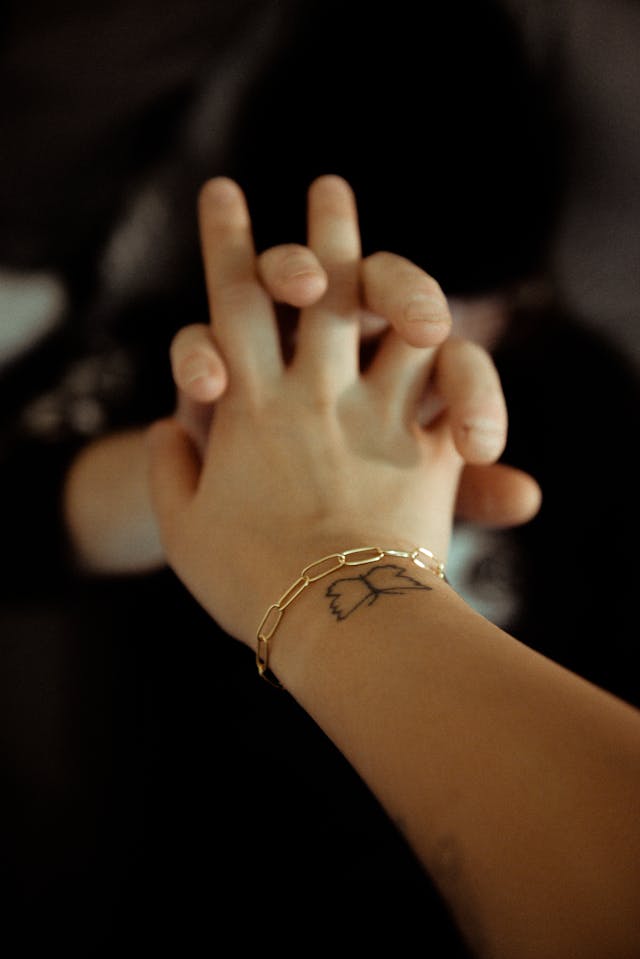Introduction: Why Learning to Shorten a Bracelet Is a Must
Jewelry is a personal statement, and bracelets often hold sentimental value. However, an ill-fitting bracelet can be frustrating. Whether it’s too loose and keeps slipping off or too tight and uncomfortable, knowing how to shorten a bracelet can transform your favorite piece into a perfect accessory.
Many people avoid wearing their cherished bracelets because they don’t fit well. Instead of leaving them in the drawer, learning how to adjust or shorten them can breathe new life into your collection. This guide covers everything from DIY methods to professional solutions for resizing bracelets made of various materials, including metal, beads, and chain links. By the end of this article, you’ll be equipped with the skills to resize any bracelet to your liking.
If you’ve ever wondered about the best way to shorten a bracelet, this guide is your comprehensive resource. Let’s dive into the different techniques to ensure your jewelry fits just right.
Understanding Bracelet Anatomy
Before diving into techniques, it’s essential to understand a bracelet’s anatomy. A typical bracelet comprises links, a clasp, and decorative elements like beads or charms. Knowing the type of bracelet you’re working with will help determine the best method to shorten a bracelet.
For example, chain bracelets can often be resized by removing links, while elastic bracelets require restringing. Identifying these components ensures that you don’t accidentally damage the piece while resizing it.
Tools You Need to Shorten a Bracelet
Having the right tools is crucial for resizing a bracelet effectively. Common tools include:
Jewelry pliers: Ideal for opening and closing links.
Wire cutters: Useful for cutting chains or wires.
Measuring tape: Ensures precise adjustments.
Beading needles: Necessary for restringing beaded bracelets.
Jump rings and clasps: Handy for reattaching components.
These tools make it easier to handle delicate materials and achieve a professional finish when you shorten a bracelet.
Resizing Chain Bracelets
Chain bracelets are among the easiest to resize. To shorten them:
Identify the extra links.
Use jewelry pliers to open the link where you want to remove sections.
Detach the unwanted links and reattach the chain.
Secure the clasp and test the fit.
This method is straightforward and works well for most metal chains. It’s an effective way to shorten a bracelet without compromising its design.
Adjusting Beaded Bracelets
Beaded bracelets often require restringing to achieve the desired fit. Follow these steps:
Cut the elastic or wire holding the beads.
Remove extra beads to achieve the desired length.
Restring the beads onto a new piece of elastic or wire.
Tie a secure knot or attach a clasp to finish.
Restringing allows you to customize the bracelet while ensuring a snug fit. This is a versatile way to shorten a bracelet made of beads.
Modifying Leather Bracelets
Leather bracelets often come with adjustable features, but if not, you can trim the excess length. Here’s how:
Measure the wrist and mark the desired length on the leather.
Use sharp scissors to cut the leather at the mark.
Reattach any clasps or fasteners.
For braided leather bracelets, you may need to unravel and re-tie the ends to ensure a clean finish. This technique ensures that you can shorten a bracelet made of leather without compromising its style.
Working with Bangles
Bangles, being solid and non-adjustable, require professional tools for resizing. If you’re determined to DIY:
Use a metal cutter to make a precise cut.
Remove the excess section.
Use a soldering tool to rejoin the ends.
While this method can be challenging, it’s a viable option for those looking to shorten a bracelet made of rigid materials like metal.
Adding or Removing Clasps
Sometimes, the clasp can be the key to resizing a bracelet. If the bracelet is too large, adding a smaller clasp can help shorten it. Conversely, removing an oversized clasp can reduce the length. Here’s how:
Detach the existing clasp using pliers.
Attach a new clasp to the end links or strings.
Secure the connections and test the fit.
This method is particularly effective for chain and bead bracelets, allowing you to shorten a bracelet without altering its main structure.
Consulting a Professional Jeweler
For intricate or high-value bracelets, consulting a professional jeweler is often the best option. They have the tools and expertise to resize any type of bracelet without causing damage. Professional resizing ensures a perfect fit and preserves the bracelet’s integrity.
Jeweler services are particularly useful for antique or designer pieces, where the risk of DIY damage is high. It’s a reliable way to shorten a bracelet that holds significant value.
Preventing Future Sizing Issues
To avoid the need for frequent resizing, consider these tips:
Measure your wrist accurately before purchasing a bracelet.
Opt for adjustable designs whenever possible.
Store bracelets properly to maintain their shape.
These precautions can save time and effort, ensuring that your bracelets always fit well. Knowing how to shorten a bracelet becomes less necessary when you choose the right size from the start.
Eco-Friendly Resizing Methods
If sustainability is a priority, consider eco-friendly resizing methods. Reusing materials, such as leftover beads or links, reduces waste. Additionally, opting for natural materials like leather or hemp can make adjustments easier and more environmentally friendly.
These approaches align with sustainable practices while allowing you to shorten a bracelet effectively and responsibly.
Conclusion: Perfectly Fitting Bracelets Made Easy
Resizing bracelets doesn’t have to be a daunting task. Whether you’re working with metal chains, beaded designs, or leather straps, there’s a method for every type of jewelry. By following the techniques outlined in this guide, you’ll be able to shorten a bracelet with confidence and precision.
Remember, the key to successful resizing is understanding the material and using the right tools. For high-value or intricate pieces, seeking professional help ensures a flawless finish. With these tips, you can transform ill-fitting bracelets into cherished accessories that you’ll love to wear.
Don’t let poorly fitting bracelets gather dust in your jewelry box. Take charge, make the adjustments, and enjoy a perfect fit every time. Learning how to shorten a bracelet is not only a practical skill but also a creative way to personalize your accessories.

Share this:
- Click to share on Facebook (Opens in new window) Facebook
- Click to share on X (Opens in new window) X
- Click to share on LinkedIn (Opens in new window) LinkedIn
- Click to share on Reddit (Opens in new window) Reddit
- Click to share on X (Opens in new window) X
- Click to share on Threads (Opens in new window) Threads
- Click to share on WhatsApp (Opens in new window) WhatsApp




